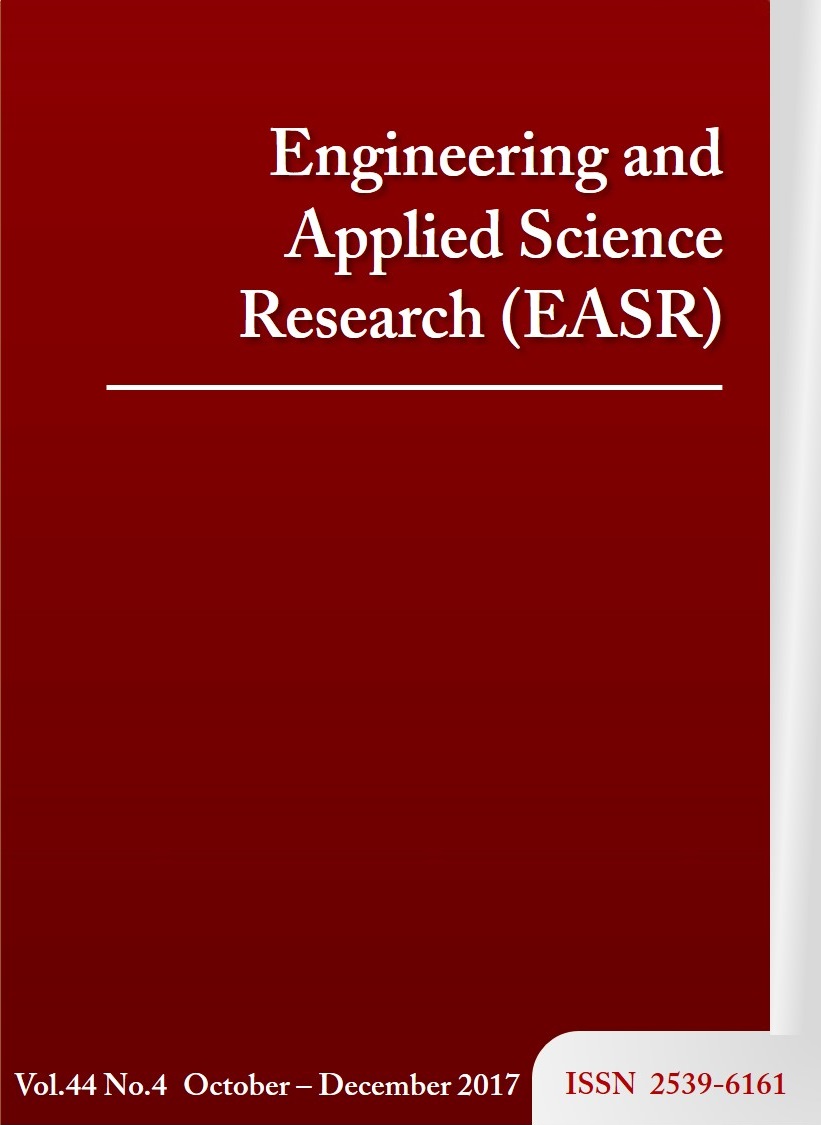Dynamic simulation of a direct-coupling 3-blade vertical-axis hydrokinetic turbine with a low speed generator
Main Article Content
Abstract
This research paper reports a dynamic simulation of a 3-Blade Vertical-Axis Hydrokinetic Turbine for direct-coupling with a low speed generator. Direct-coupling eliminates the gearbox. Various turbine radii were investigated in water velocities ranging between 0.5 and 2 m/s. A simulation program was done in MATLAB to compute the dynamic parameters such as rotational speed, torque produced and response time. Additionally, a S814 blade profile was used but its coefficients were analytically expanded to cover angles of attack ranging from -180 to +180o using computational fluid dynamic analysis. The results were analysed and a diagram was produced to aid the selection of a turbine radius to suit the water velocity. Larger turbines spun at lower nominal speeds with higher torque. However, high water velocity was the most favorable because it gave turbines a faster response time. To determine the turbine radius, generator characteristics such as nominal speed and torque are required. The response time may not be critical in normal operation because the rotor could be spinning constantly for months. However, it will be crucial in the design of the control system.
Article Details
This work is licensed under a Creative Commons Attribution-NonCommercial-NoDerivatives 4.0 International License.
References
Martin A, Brian K. Hydrokinetic turbine blades: Design and local construction techniques for remote communities. Energy for Sustainable 2011;15:223-30.
Yingplew Supakittiwong. URL: http://www.yp.co.th/2010-10-03-06-35-34/88--hydroelectricity. html Accessed 13/08/2014
Brian K. Improving the cost-effectiveness of darrieus hydrokinetic turbines. Oxford tidal energy workshop 2014.
Davila JM, Vilchis JM, Mishra RS. Performance of a hydrokinetic energy system using an axial-flux permanent magnet generator. Science Direct, Energy 2014;65:631-8.
George EH, Gregory A. How to evaluate hydrokinetic turbine performance and loads. Alden Research Laboratory.URL: http://www.tiburonaguayelectricidad.com/ Hydrokinetics_White_Paper.pdf Accessed 14/8/2014.
Taylor JH. Numerical simulation of a cross flow marine hydrokinetic turbine. Master thesis, University of Washington 2012.
Nick B, Jimmy D, Erin C. Axial flux permanent magnet generator (master-thesis). University of Washington 2013.
Deglaire P, Eriksson S, Kjellin J, Bernhoff H. Experimental results from a 12 kW vertical axis wind turbine with a direct driven PM synchronous generator. The Angstrom Laboratory, Uppsala University, Sweden 2008.
Eriksson S. Direct driven generators for vertical axis wind turbines (Ph.D thesis). Uppsala University 2008.
Eriksson S, Bernhoff H, Leijon M. A 225 kw direct driven pm generator adapted to a vertical axis wind turbine. Advances in power electronics 2011, ID 239061.
Syed SK, Zhang L, Nazia S. Harnessing tidal energy using vertical axis tidal turbine. Research journal of applied sciences, Engineering and technology 2012;5:239-52.
Fatemeh B, Adi M, Mehdi N, Mohamad H, Jaswar. An innovative vertical axis current turbine design for low current speed. Jurnal teknologi 2013.
Abdullah Y, et al. Optimization of green energy extraction: an application of single stage cross-flow micro-hydro turbine. Manu oper research and sus 2013;1:7-12.
Kari S. Small-scale water current turbines for river applications. Zero emission resource organization 2010.
Raul U, Michael LP, Richard WK, Geoffrey SD, Matthew PC. Modeling and validation of a cross flow turbine using free vortex model and a modified dynamic stall model. Renewable Energy 2013;50:662-9.
Qihu S, Syed SK, Zhimin X, Ghazala S, Liang Z. CFD simulation of fixed and variable pitch vertical axis tidal turbine. Journal marine sciences applied 2013;12:185-92.
Rovio T, Vihriala H, Soderlund L, Kriikka J. Axial and radial flux generator in small-scale wind power production.Institute of Electromagnetics, Tampere University of Technology 2001.
Cetin NS, Yurdusey MA, Ata R, Ozdemir A. Assessment of optimum tip speed ratio of wind turbines. Mathematical and Computational. App. 2005, Vol.10, No. 1:147-54.
Gorle JMR, Chatellier L, Pons F, Ba M. Numerical analysis of hydrodynamics and circulation controlled blades for Darrieus turbine. 14emes Journees de I'Hydrodynamique, DGA Techniques Hydrodynamiques, Val de Reuil, France, 2014
Ahmed MR, Blade sections for wind turbine and tidal current turbine applications-current status and future challenges. Inter journal of energy research 2012; 36:829-44.
National Renewable Energy Laboratory, NREL’s S814 Airfoil (s814-nr). http://airfoiltools.com/airfoil/details?airfoil =s814-nr. Accessed 11/7/2016.
Janiszewska JM, Reuss RR, Hoffmann MJ, Gregorek GM. Effects of grit roughness and pitch oscillations on the s814 airfoil. Airfoil Performance Report, Revised (12/99) 1996, NREL/TP-442-8161.



